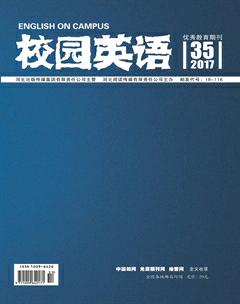Activation of Image—Schemas in the Process of Translation
【Abstract】This thesis attempts to apply the Image-Schema Theory into the translation of mythological images in the Classic of Mountains and Seas, so as to deepen the manipulation of Image-Schema Theory and provide a new perspective to research the translation of the Classic of Mountains and Seas.
【Key words】Activation; Image-Schemas; Process of Translation
1. Image-Schema Encoding in the Process of Translation
Translation is a double conceptualizing process, including the translators reading in the source text, which we have explored in the above section, and the translators reading in the target text. As a translator, figuring out an appropriate target text is his ultimate aim. As a result, a translators expressions play an important role in target readers recognition.
To sum up, in order to construct proper Image-Schema in the target text and benefits cross-cultural communication, translators need to consider various aspects including the choice of translation methods.
2. Activation of Image-Schemas in the Process of Translation
In the aim of decoding the ST, translators need to activate related schemas in their mind. Though “Top-Down” and “Bottom-Up” are two different kinds of modes to activate related schemas, they always function together when decoding the ST. For translators, fully decoding the ST is the precondition to translate ST into TT.
2.1 “Bottom-Up” Activation
“Bottom-Up” activation processes ST from the lowest level to the highest level. Peterson indicated in 1991 that “bottom-up model can also call data-driven model”. In the process of translating, image-schema transferring is not merely translate the literal language from one language to another, but also imply the transform of social, cultural, lingual information obtained in the ST. This process also been considered as a process from generalization to abstraction. Thus, to fully understand the deep meaning, translators are required to activate basic schemas stored in their mind, based on which, bigger schema are formed and provide a fully understanding of the ST. For example, the schemas of “language”, “tool” “walk” “two legs”, and “two arms” may integrate to activate a schema of “human”.
2.2 “Top-Down” Activation
When readers process information from the highest level to the lowest level, we consider this process as “Top-Down” activation. Different from “Bottom-Up” activation, it is a process from abstraction to generalization, which means that readers activate the pre-stored schemas in their mind to predict the new message form ST. At this time more abstract factors such as readers attitude, beliefs, expectations, and intelligence and so on may drive the recognition processing.
2.3 Interactive Activation in the process of translation
There are defects in “Top-Down” activation, and in Eskeys (1988) point of view “‘Top-Down activation have some limitations”. That is to say, for proficient translators can perfectly activate the related image-schemas and comprehend the ST with their rich experience and knowledge, while “Top-Down” activation may not occur if translators not possess sufficient schemas in their mind, not to say fully comprehend the ST.
As a result, during the process of decoding the ST, translators need to utilize both “Bottom-up” and “Top-Down” modes to efficiently activate the schemas which are related with the ST. “Bottom-up” and “Top-Down” modes are complementary with each other. In the process of decoding the ST, translators need to lean on both schemas in lower level and in higher level.
3. Summary
In sum, in most cases, “Top-Down” mode and “Bottom-Up” mode need to be activated simultaneously, so that translators can fully comprehend the ST, and figure out the deep meaning contained between the lines.
References:
[1]Fauconnier,G.&Turner,M.(2002).The Way We Think.London:Basic Books press,6.
[2]Fillmore.C.(1975).An Alternative to Checklist Theories of Meaning.Berkeley:Berkeley Linguistics Society,123.
[3]Fracasso,R.Holy Mothers of Ancient China:A New Approach to the His-wang-mu Problem.Leiden:Toung Pao.74(1-3),1-46.
[4]Gibbs.&Herbert.(1995).The Cognitive Psychological Reality of Image-Schema Theorys and Their Transformations.Cognitive Linguistics,6,347-378.
[5]Gibbs,R,M.(1994)Figurative Thought and Figurative Language.In Gernsbacher(ed).Handbook of Psycholinguistics.San Diego:Academic Press.
[6]Hu,Z,L.(2006).Linguistics:A Course Book.Beijing:Peking University Press.
作者簡介:裴璐(1990.4.10-),女,漢族,山西太原人,碩士研究生,研究方向:外國語言學及應用語言學。

